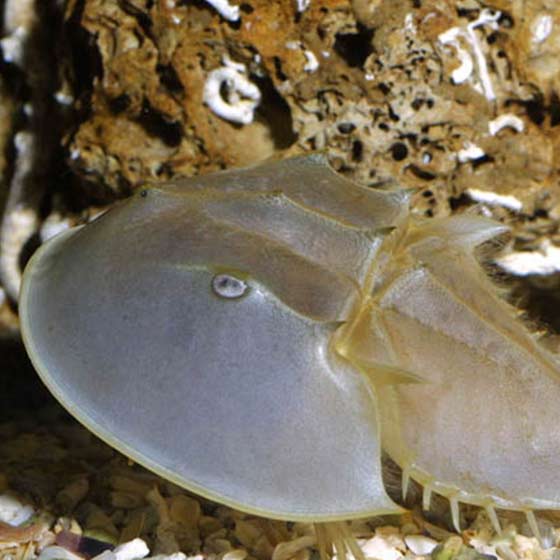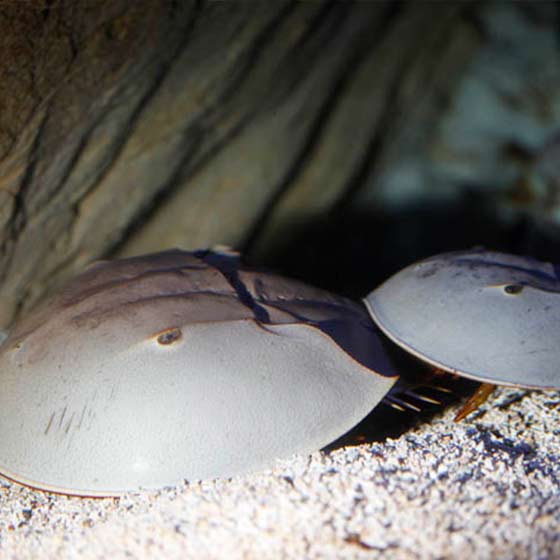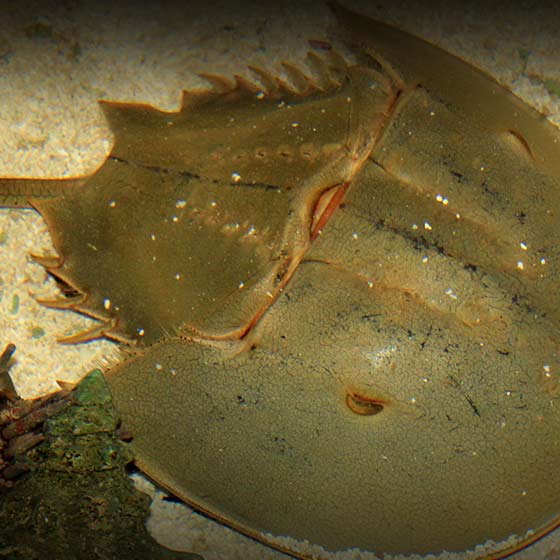Biology
This animal is not actually related to crustaceans, but rather to spiders and scorpions. It first appeared 350 million years ago, evolving slowly in a stable environment, so that it has retained many of its ancestors’ features.

This animal is not actually related to crustaceans, but rather to spiders and scorpions. It first appeared 350 million years ago, evolving slowly in a stable environment, so that it has retained many of its ancestors’ features.

Atlantic horseshoe crabs reach sexual maturity around 9-11 years for males and 10-12 years for females. They are bottom-dwellers and, in the spring, come together in large numbers on the shore to reproduce.
During the full moon, at the highest tide, the females dig holes in the sand just above the tidal line and lay 2,000 to 20,000 eggs, which the males then fertilize.
When the sea begins to recede, the adults return to the water. Their eggs incubate in the sand for around 5 weeks until the highest tide of the following full moon, when the larvae are able to enter the water.

Atlantic horseshoe crabs have no teeth and use the base of their front claws on either side of their mouth to crush their food. Their diet is made up of small fish, crustaceans and molluscs. Atlantic horseshoe crabs are particularly active at night.

The blue blood of the Atlantic horseshoe crab clots in the presence of certain substances produced by bacteria. As a result, it is used to test certain medical devices for those endotoxins.